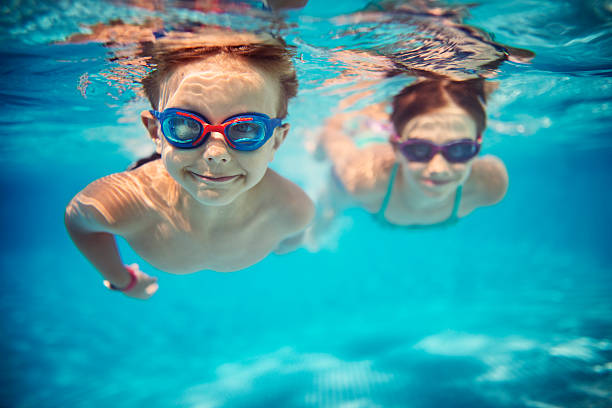Protect Your Loved Ones with Expert Strategies to Reduce Drowning Risks
Drowning is a silent killer, claiming over 236,000 lives globally each year (World Health Organization). Whether it’s a pool, lake, or bathtub, water poses risks to children and adults alike. This comprehensive guide combines actionable advice, emotional storytelling, and evidence-based strategies to help you prevent tragedies and promote water safety. Let’s dive into how you can safeguard your family while enjoying water responsibly.
Why Water Safety Matters: The Hidden Risks of Drowning
Drowning is the third leading cause of unintentional injury death worldwide, and children under five are at the highest risk. What makes drowning uniquely dangerous is its speed and silence—it can happen in under 60 seconds without splashing or screams.
Key Risk Factors:
- Lack of swimming skills.
- Unsupervised access to water (pools, bathtubs, buckets).
- Alcohol use near water (involved in 70% of teen/adult drownings).
- Medical emergencies (e.g., seizures, heart attacks).
- Poorly maintained pool barriers or missing safety equipment.
A single moment of distraction can lead to irreversible consequences. Imagine turning away to answer a phone call, only to find a child submerged in water. This is why proactive prevention is non-negotiable.
Top 10 Water Safety Tips to Prevent Drowning
Follow these strategies to create layers of protection against drowning:
- Constant Adult Supervision
- Never leave children unattended near water—even for seconds.
- Assign a designated “Water Watcher” to avoid distractions.
- Learn CPR
- Immediate CPR can double or triple survival chances after drowning (American Red Cross).
- Enroll in a certified CPR course today.
- Install Pool Barriers
- Use four-sided fencing (at least 4 feet tall) with self-closing gates.
- Remove toys from pools to avoid attracting children.
- Teach Swimming Early
- Formal lessons reduce drowning risk by 88% for kids aged 1–4 (CDC).
- Start with water acclimation and survival float techniques.
- Wear Life Jackets
- Use U.S. Coast Guard-approved life jackets in open water.
- Avoid inflatable toys, which are not safety devices.
- Avoid Alcohol
- Alcohol impairs judgment and coordination. Stay sober near water.
- Check Water Conditions
- Avoid swimming in rough seas, strong currents, or unsupervised beaches.
- Learn Rip Current Survival
- If caught, swim parallel to shore until free.
- Cover Wells and Buckets
- Toddlers can drown in just 2 inches of water.
- Install Pool Alarms
- Use door, pool, and wearable alarms for added security.
Essential Water Safety Equipment for Homes
Equip your home with these tools to minimize risks:
| Item | Purpose |
|---|---|
| Life jackets | Prevent drowning in open water. |
| Pool fences | Restrict unsupervised access. |
| CPR posters | Quick reference during emergencies. |
| First aid kits | Treat injuries promptly. |
| Anti-entanglement covers | Prevent hair/clothing from trapping swimmers. |
Pro Tip: Store emergency contacts and CPR instructions near pools.
Teaching Water Safety to Children: Start Early, Save Lives
Children as young as six months can begin water acclimation. Focus on:
- Blowing Bubbles: Teaches breath control.
- Floating: Builds confidence in deep water.
- Safe Entry/Exit: Practice climbing out of pools independently.
Sarah, a mother from Florida, credits swim lessons for saving her 3-year-old’s life after he fell into a neighbor’s pool. “He knew how to float until help arrived,” she shares.
Open Water vs. Pools: Tailoring Safety Strategies
Drowning risks vary by environment:
Pool Safety
- Use slip-resistant surfaces.
- Keep rescue poles nearby.
- Check drain covers for compliance with the Virginia Graeme Baker Pool & Spa Safety Act.
Open Water Safety
- Swim near lifeguards.
- Beware of sudden drop-offs or cold water shock.
- Review local water quality reports to avoid contaminated water.
The Role of Communities in Drowning Prevention
Drowning prevention requires collective action:
- Advocate for public swim lessons in schools.
- Host CPR training workshops.
- Share water safety resources on social media.
After losing her son to drowning, Maria founded a nonprofit to distribute free life jackets at lakes. “If I can save one family from this pain, it’s worth it,” she says.
Drowning Myths Debunked
- Myth: “I’ll hear someone drowning.”
Truth: Drowning is often silent—victims can’t call for help. - Myth: “Life jackets are only for weak swimmers.”
Truth: Even strong swimmers can face cramps or currents.
Final Thoughts: Every Second Counts
Water safety isn’t about fear—it’s about empowerment. By combining vigilance, education, and the right tools, you can enjoy water activities while minimizing risks. Bookmark this guide, share it with loved ones, and take action today. Together, we can turn the tide against drowning.
Need a CPR class? Find local training here.
For pool safety laws: Visit the U.S. Consumer Product Safety Commission.
